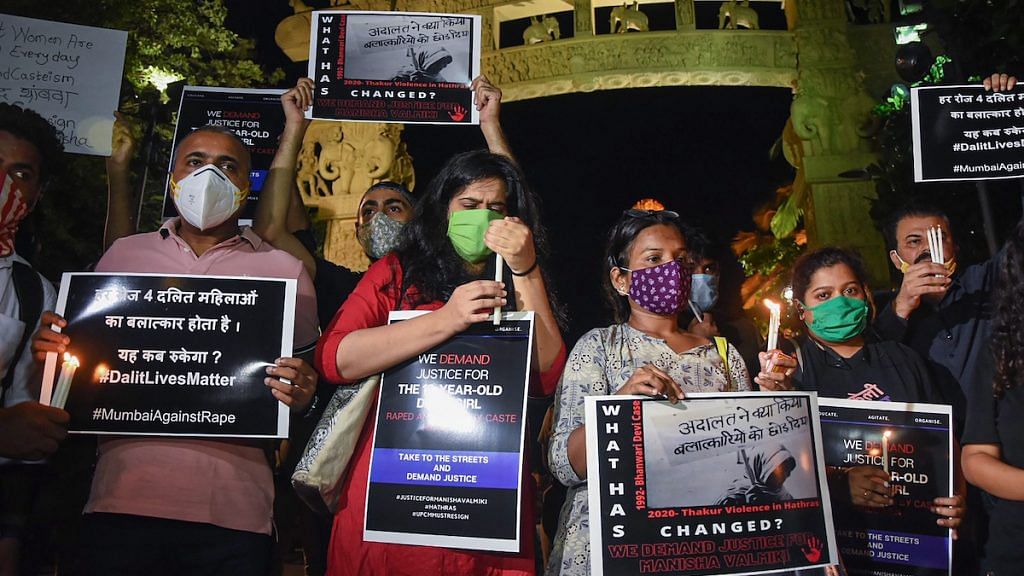The alleged ‘gang rape’ and torture of two young women in Hathras and Balrampur in Uttar Pradesh bring back to focus shocking crimes against women in north India.
We carried out a study to observe the changes and influences on the lives of adolescents as they transition to adulthood. The study documented that gender attitudes, which are critical to women’s status today, undergo significant changes in adolescence. The UDAYA Study conducted by the Population Council in Uttar Pradesh and Bihar asked adolescent respondents if they thought it was more important to educate boys than girls, whether it was wrong for girls to have male friends, if they thought girls should have a say in decisions about their marriage, whether girls like to be teased by boys, whether giving children a bath and feeding them were women’s responsibility only, whether boys should partake in domestic work as much as girls, and whether financial decisions for a household were the sole domain of the father or husband.
Findings of the recent UDAYA Study provide a glimpse into the crystal ball of those advancing towards or entering adulthood – the future adult working-age population of Uttar Pradesh and Bihar. It shows that the level of education and the role of supportive parents, teachers and frontline workers are important factors in shaping gender attitudes. The evidence from various studies points to the fact that gender views can be moulded even at older ages.
Also read: Hathras woman’s family says they know what would have saved her — ‘being a Pandit or Thakur’
What we found
The UDAYA Study was conducted over a period of three years from 2015-16 to 2018-19 in Uttar Pradesh and Bihar with over 20,000 adolescents in the age-group of 10-19 years in 2015-16. It charts their transition to adulthood and the factors that influence their lives. The survey covered unmarried girls and boys of 10-14 and 15-19 years, and married girls of 15-19 years.
The results of our study showed that a larger proportion of girls scored high on gender-egalitarian attitudes than boys over both waves of the survey. The expression of egalitarian attitudes improved as younger boys and girls transitioned to later adolescence, as it did with older girls who transitioned into young adulthood. Findings also showed that younger boys whose parents favoured them over their sisters, and younger girls who reported that their parents discriminated against them, were less likely to be gender egalitarian. Interaction with parents and discussions with them about school performance, friendship, physical changes during adolescence, or experiences of bullying or teasing was found to have a positive influence on gender role attitudes among older girls and boys.
In Uttar Pradesh, the study results showed that years of schooling and exposure to digital media helped adolescents develop gender-egalitarian attitudes. Additionally, in Bihar, it was found that the attitudes of girls were positively influenced by interactions with frontline health workers and participation in adolescent-focused programmes.
Another intervention study by the Population Council in Bihar on the formation of gender attitudes showed that sports coaching and teaching boys life skills that would typically be expected of girls, helped them accept egalitarian gender role attitudes and correct notions of masculinity. They further rejected attitudes about men’s controlling behaviours over women or girls, and perpetration of violence as a norm. Similarly, evaluation of a multi-year school-based programme in Haryana that engaged adolescents in classroom discussions about gender equality showed that the participants reported more gender-equitable behaviour, such as boys helping out more with household chores.
Also read: She left for BA admission, came back ‘dying’ — what happened to Balrampur ‘rape’ victim
An impact at a young age
Women in India are subjected to lifelong experiences of adverse gender attitudes that affect their status, freedom, mobility and ability to make decisions.
Timely implementation of programmes that address the critical factors influencing adolescents through an integrated approach can bring about positive shifts.
The tragic incidents in Hathras and Balrampur will not just impact the lives of the young woman’s family, they will set back the small gains that girls manage to negotiate by way of freedom to pursue their life choices. India has the largest adolescent population in the world, constituting a fifth of the country’s population. Investments to shape gender attitudes at a critical point in their lives today will go a long way in improving the status of women, and bring about a deep and lasting curtailment of violence against women and girls.
The author is the Director of the Population Council India. Views are personal.
